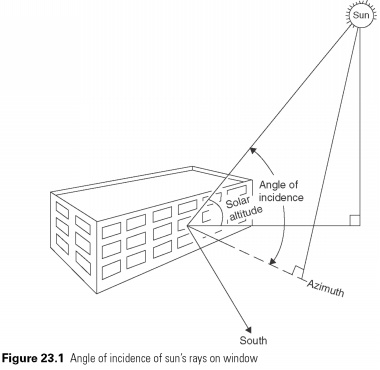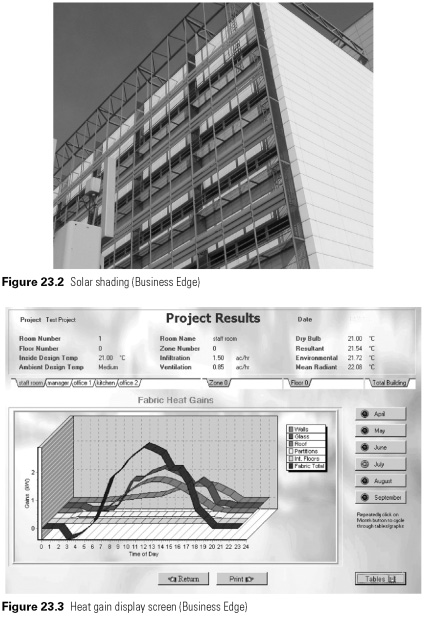Solar heat
Solar radiation through the window does not have the lag time and must be evaluated by the finite elements (i.e. the hour basis, calculated using or published data for the angles of incidence and taking into account the type of window glass.
Because the amount of solar energy and may be the main load of the building, special glass and window designs have been developed, having two or more layers and with reflective and heat-absorbing surfaces. They can reduce energy consumption, passing in the conditioned space by as much as 75%. Typical transmission figures are as follows:
- Plain single glass 0.75 transmitted
- Heat-absorbing glass 0.45 transmitted
- Coated glass, one 0.55 transmitted
- Metallized glass, reflecting 0.25 transmitted

Windows can be painted internal or external blinds, either projections or projections beyond the surface of the building (see Fig. 23.2). Windows can also be shaded part of the day on neighboring buildings.
All of these factors should be taken into account, and solar transmission assessment are intended or calculated to hours of daylight through the hotter months, although the amount of calculation can be significantly reduced if the probable the worst conditions you can guess.
For example, the greatest amount of solar energy for a window facing West, obviously, will be in the afternoon. Comprehensive data on solar radiation coefficients, absorption coefficients and methods of calculation can be found in reference books.
Computer software is widely used for the task of calculating the load and can emulate a flow of energy, office or building using mathematical models.

Recognized design methods are used to calculate the thermal profit. A typical screen of heat flow in a 24-hour period, see Fig. 23.3 . Where cooling required for large building of many individual rooms, it will be helpful for a General loads for the zones floors and a full installation, and this will help determine the best method and conditioning total area of the plant...
|


